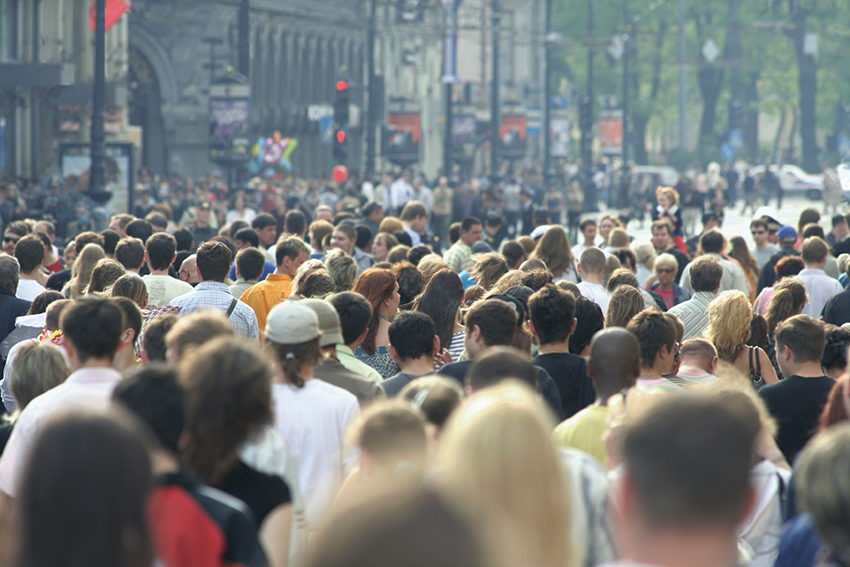
Anna Triandafyllidou on the multifaceted linkages between two of the most important socioeconomic phenomena of our time.
Migration has been intensifying and diversifying in the last 25 years. According to the 2015 International Migration Report issued by the United Nations, there were 244 million international migrants in 2015 (international migrants are here defined as people living in a given country who are either foreign born or with foreign citizenship) – 10% more than only 5 years earlier, in 2010.
While high income countries are the top recipients of international migrants, the main source of international migrants are middle income countries – accounting for 65% of all international migrants.
Contrary to what popular wisdom might say (and many politicians in Europe sustain), 1 in 4 international migrants originate from high income countries while only 1 in 10 migrants comes from the poorest countries in the world.

Source: Figure 1, p. 5, UN International Migration Report 2015. Highlights. Available at http://www.un.org/en/development/desa/population/migration/publications/migrationreport/docs/MigrationReport2015_Highlights.pdf last accessed on 12 April 2017.
It is also worth considering that a large part of international migration occurs within the same major area of the world (UN International Migration Report 2015: 14). Approximately 60% of all international movement in Asia, Europe and Oceania occurs within the region and the same is true for over 50% of all international migration originating in Africa. In other worlds people go to neighbouring and not so distant countries. Of course such intra-regional migration takes place between countries of different income levels thus people may go from a low income to a middle income country within Africa or Asia. This however testifies to a complicated pattern of population flows that defies simplistic and populist representations of all migrants in the world heading to Europe or North America.
Nonetheless the size of international migration remains rather small. International migrants accounted in 2013 for 3.2 percent of the world’s population compared to 2.9 percent in 1990 and 2.2 in 1980 (UN International Migration Report 2013). In the North, international migrants constituted 10.8 per cent of the total population in 2013 compared to 1.6 per cent in developing regions. Given the high levels of integration of the global economy in the last 30 years, one wonders not why so much migration occurs but rather why so few people are moving across national borders.
As developing regions become integrated in international trade they experience both the advantages and disadvantages of the global economy. Production is becoming both de- and re-localised through the emergence of global supply chains. This creates an increased and diversified supply of goods and services for both developing and developed regions but also leads to a global division of labour that is highly unequal. Local firms may thus become integrated into larger networks of production but they may also be driven out of business because of the dominance of multinational conglomerates. Similarly such socio economic restructuring may create more jobs in factories and services in developing and less affluent regions but may also drive out of their properties and professions large segments of population in these same regions.
Socio-economic transformations such as those described briefly above drive increased international migration. They intensify grievances and opportunities that lead people to seek better living and working opportunities in distant lands while also facilitating transport and communication.
Considering the factors triggering population movements, people’s “immobility” appears to be more striking than global mobility patterns at present. This “immobility” is of course explainable in at least four ways. Firstly, it is now well established that the poor are the least mobile, often unable to undertake the costs involved in the migratory process. Second, conventional migration theories assume a world of free movement, whilst mobility is constrained by border and immigration controls. Thirdly, rather than “immobility” per se, the vast majority of movements on a global scale takes place within, rather than between, countries (exemplified by the estimated 100-200 million people who in the past couple of decades have moved internally within China alone). Fourthly, global estimations may fail to capture unrecorded movements, such as irregular migration or internally or internationally displaced populations in the South.
The era of globalisation is marked by the contradiction between the increasingly unhindered mobility of capital and goods, but also information, ideas and resources, on the one hand, and the increasingly restricted mobility of people. In addition the relationship between migration and development is not a straightforward one: it is not clear whether migration is cause or an effect of development, and vice versa. In contrast to earlier beliefs that migration is a failure of development (or a product of underdevelopment), there is lately growing consensus that migration arises as a product of development or as people’s response to changing developmental conditions, yet the situation is rather complex. While in some countries migration may have triggered a development dynamic through economic and social remittances, in others it may mainly have drained local systems of production from necessary talent and capital.
The Handbook on Migration and Globalisation edited by Anna Triandafyllidou focuses on the dynamics that link migration and globalisation processes from an economic, social, political and cultural perspective looking at the challenges that emerge for labour markets, welfare systems, families and cultures, institutions and governance arrangements as well as norms.
Anna Triandafyllidou, Professor, Robert Schuman Centre for Advanced Studies, European University Institute, Italy

The Handbook of Migration and Globalisation is available now
Read chapter 1 free on Elgaronline


Leave a Reply